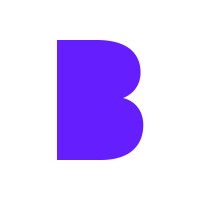Over the last several years, one word has dominated: “cloud.” By now, businesses large and small have integrated the cloud into their enterprises. It has become so endemic to business, in fact, that many of us may be going with the flow and not realize we have some unanswered questions about this transformative innovation. What are the questions still pending around the cloud that we need answered to truly grasp its impact? Builders, let’s take a look.
Question #1: What is the cloud? No, really.
It’s okay to ask this question. For many of us who have a better than average understanding of the cloud in terms of its’ business applications, we may not have taken the time to consider the actual specifics. Or, alternatively, we might understand it in the abstract without being able to explain it effectively to the average layperson.A good way to answer the question? Think of it in terms of the power infrastructure. Historically, anyone operating a device—be it a plow or a kitchen tool— had to rely on self-generated power. You might power a spice grinder with your own two hands, for example, or else have a team of oxen pulling a plow. With the advent of electricity and the eventual implementation of a power infrastructure, the “power” needed to drive any of your devices became centralized at the electric company. You tapped into this power remotely and no longer had to maintain “power” (be it in the shape of an oxen or your own two hands) in your own home. Think of your data on the cloud with much the same centralized approach as an electric company.
Question #2: What is a hybrid cloud and what are its' advantages?
A hybrid cloud is a mix of the two, leveraging all the advantages of a private cloud when dealing with the predictable and then using the added advantage of the public cloud when you need to scale up. Businesses defined by seasonality, as an example, might benefit from a hybrid cloud and its inherent scalability. Elasticity is a core concept of the cloud, and the hybrid cloud may be the best manifestation of that.
Question #3: What comes next?
The cloud has been the big game changer for technology and businesses in the last decade. What is the next step, the natural evolution from this era of the cloud? AI-driven cloud, or cloud-driven AI, depending on your perspective. A synergy between these two areas is solidifying and is sure to be a significant driver in innovation to come.One stumbling block for some companies looking to adopt AI is a knowledge gap in-house. These firms may not have the assets on hand that can adequately program AI. The cloud provides an answer, providing tools that allow developers to create AI-based solutions with ease. On the other side of the coin, cloud providers are continuing to explore innovative ways to leverage AI for business solutions. Technology market intelligence firm Tractica forecasts predict that 50% of public cloud services will be AI-driven by the year 2025.What are your questions around the cloud, Builders? Do you have your own ideas around cloud and the future of the cloud? We’d love to hear from you across the social scape on Instagram, Facebook, LinkedIn, and Twitter. Our human-assisted AI works in the background to buy forward capacity from partners including Amazon Web Services to ensure that we can provide you with capacity exactly when you need it, and at the best price possible. We are the largest AWS partners in India and help move your infrastructure in a way that optimises costs. What's more: our prepaid AWS cloud vastly improves monitoring for enterprises, allowing for controlled spending and fixed budgets, automated tracking, local currency support, with all information displayed in real time on an easy-to-use dashboard. You can mitigate the challenges of paying for cloud services by managing your expenses upfront, and access the AWS Free Tier without needing to register their credit card.
Has this conversation inspired you to start exploring AI-driven solutions? Head on over to take a look at Builder Studio.
Stories published by the editorial team at Builder.ai.














 Facebook
Facebook X
X LinkedIn
LinkedIn YouTube
YouTube Instagram
Instagram RSS
RSS


